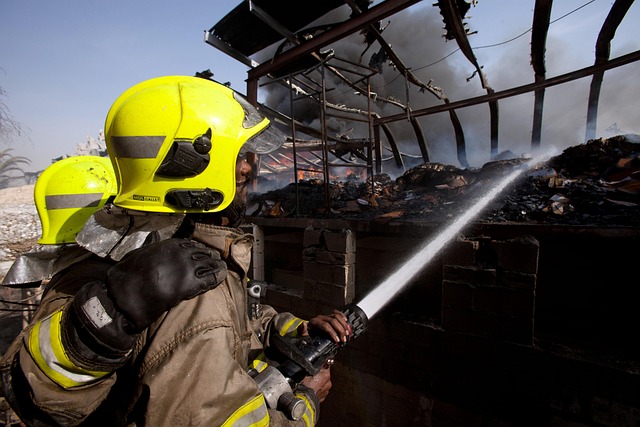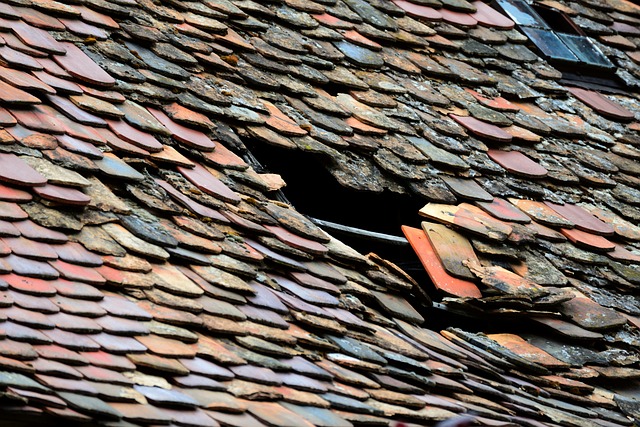In emergency roof situations, swift action by qualified professionals is crucial. Signs like missing shingles, leaks, or structural damage require immediate attention to prevent further complications. Regular inspections and maintenance identify potential issues early, reducing costs. Emergency repairs involve temporary fixes for leaks and ensuring structural integrity until a complete solution can be implemented. A detailed report with recommendations follows inspection, balancing immediate and long-term solutions for durable protection. Proactive measures like regular cleaning, sealing, reinforcing, and using weather-resistant materials prevent future emergencies and save on Emergency Roof Repair costs.
In the face of unexpected weather events, a functional roof is your home’s first line of defense. Understanding emergency roof situations and swift response times can mitigate damage and save costs. This comprehensive guide delves into crucial aspects of emergency roof inspections, from identifying common signs requiring immediate attention to post-inspection recommendations and preventative measures for future emergencies. Learn why expert evaluation and timely emergency roof repair are essential for your peace of mind.
Understanding Emergency Roof Situations

In emergency roof situations, swift action is paramount. A roof that has been damaged due to severe weather conditions, such as heavy storms, strong winds, or falling debris, requires immediate attention to prevent further deterioration and potential safety hazards. Emergency roof repair involves assessing the extent of the damage, securing temporary fixes for leakages, and ensuring structural integrity until a more comprehensive solution can be implemented.
Understanding these situations is crucial in recognizing when professional intervention is necessary. Signs like missing shingles, large holes, or significant water intrusion signal an emergency that demands immediate attention from seasoned roofers. Regular inspection and maintenance can help in identifying potential issues early on, thereby minimizing the severity of emergency roof repair needs.
The Importance of Quick Response Times

In cases of emergency roof repairs, quick response times can make a significant difference in mitigating damage and preventing further complications. When a roof is damaged due to extreme weather conditions, such as heavy storms or strong winds, it’s crucial to act swiftly. Delayed intervention can lead to water intrusion, structural instability, and even safety hazards for occupants. Time is of the essence when it comes to emergency roof inspections and repairs because prompt action can stop minor issues from escalating into costly and time-consuming problems.
Efficient response times ensure that any weak spots or leaks are identified and fixed before they cause more significant damage to the property. Skilled professionals equipped with the right tools and knowledge can assess the situation, provide temporary patches if necessary, and offer expert advice on permanent solutions. This swift intervention not only saves costs but also protects the integrity of the building’s structure, ensuring the safety and comfort of its occupants.
Who Should Conduct an Inspection?

When it comes to emergency roof inspections, it’s crucial to have qualified and experienced professionals handle the task. These experts are trained to assess potential hazards and structural damage efficiently. They possess the knowledge and tools necessary for a thorough inspection, ensuring that any issues, from leaks to serious structural problems, are identified promptly.
The role of these specialists is vital, especially in urgent situations. They can provide immediate insights into the extent of the damage, enabling swift decisions regarding emergency roof repair or replacement. Their expertise minimizes potential risks and ensures the safety of occupants while offering cost-effective solutions.
Common Signs Requiring Immediate Attention

In many cases, identifying potential issues with your roof can be challenging as they often develop over time and may go unnoticed until they become more severe. However, there are several common signs that indicate an immediate need for emergency roof repair. One of the most visible indicators is missing or damaged shingles, which can leave the underlying layers exposed to the elements. Another red flag is excessive moisture buildup in attics or on rooftops, often resulting from leaks caused by weak or broken roofing materials. Cracks in the roof structure, especially near chimneys and vents, are also cause for concern as they can compromise the overall stability of your roof. Moreover, if you notice any signs of water damage inside your home, such as stained ceilings or warped walls, it could be a clear indication that your roof requires emergency attention to prevent further complications.
Additionally, uneven or sagging roofs should not be ignored. These issues often signal structural problems that may require professional intervention to correct before they lead to more serious and costly repairs. Regular inspections can help catch these concerns early on, but when you notice any of the above signs, it’s crucial to contact a roofing professional for an emergency roof repair assessment as soon as possible.
Comprehensive Inspection Checklist

When conducting an emergency roof inspection, a comprehensive checklist ensures no detail is overlooked. Start by assessing the overall structure and condition of the roofing system. Look for signs of damage like missing or damaged shingles, flashing, or gutters. Check for any structural weaknesses, including loose or corroded fasteners. Inspect the attic for water damage or mold growth, as these could indicate leaks.
Pay close attention to areas prone to problems: valleys, chimneys, and corners. Verify that vents are clear and undamaged, ensuring proper air circulation to prevent excessive moisture buildup. Also, check for proper drainage around the roofline by inspecting downspouts and gutters, clearing any debris, and ensuring they direct water away from the foundation. Remember, a detailed inspection is key to identifying potential emergency roof repair needs promptly.
Temporary Fixes vs. Long-Term Solutions

When it comes to emergency roof inspections and repairs, one of the key considerations is choosing between temporary fixes and long-term solutions. Temporary repairs are quick and effective in providing immediate relief from leaks or structural damage, allowing residents to stay safe until a more permanent fix can be arranged. These solutions include tarpings, board-ups, and temporary shoring. However, these patches are not designed for durability and often require replacement after a few months.
Long-term emergency roof repair solutions, on the other hand, offer a more sustainable approach. This involves thorough inspections to identify the root cause of the damage, followed by comprehensive repairs that ensure the roof is structurally sound and weatherproof. While these solutions might cost more upfront, they provide lasting protection, enhancing the property’s value and preventing future, costly damages caused by water intrusion or weakened structural elements.
Post-Inspection Recommendations

After a thorough emergency roof inspection, professionals will compile a detailed report outlining any issues found. Based on this assessment, they’ll provide tailored recommendations for Emergency Roof Repair. This may include immediate fixes to prevent further damage, such as tarping over leaks or securing loose shingles.
Longer-term strategies might involve replacing worn-out components like gutters or underlayment, or suggesting a complete roof replacement if the damage is extensive. The goal is always to ensure structural integrity and protect the property from potential water intrusion and other weather-related hazards.
Preventative Measures for Future Emergencies

After an emergency roof inspection, it’s crucial to not only fix immediate damage but also implement preventative measures for future emergencies. Regular maintenance checks are essential to mitigate risks associated with weather-related events and other potential hazards. Homeowners should schedule routine inspections to identify weak spots or signs of wear and tear that could lead to costly Emergency Roof Repair. Keeping gutters clean, ensuring proper ventilation, and sealing any leaks or gaps around roof vents and pipes can significantly reduce the risk of water intrusion, mold growth, and structural damage.
Additionally, strengthening the roof structure by installing additional ties, reinforcing trusses, and using impact-resistant materials can provide better protection against strong winds and falling debris. Using high-quality, weather-resistant shingles and underlayments, as well as securing loose tiles or shingles, are also effective preventative measures. Regular upkeep not only saves money but also protects the integrity of your home’s roof and ensures peace of mind in case of future emergencies.
